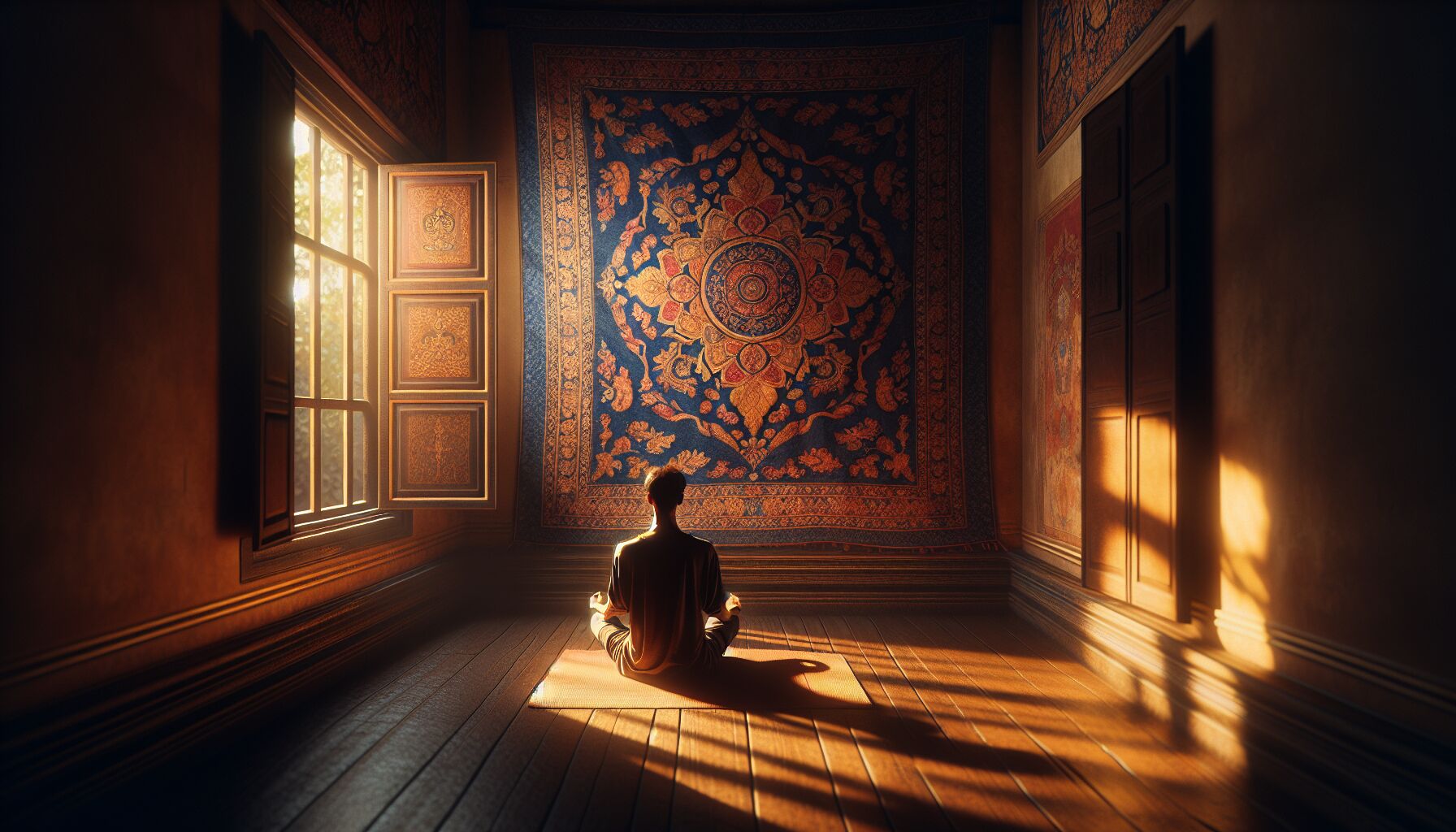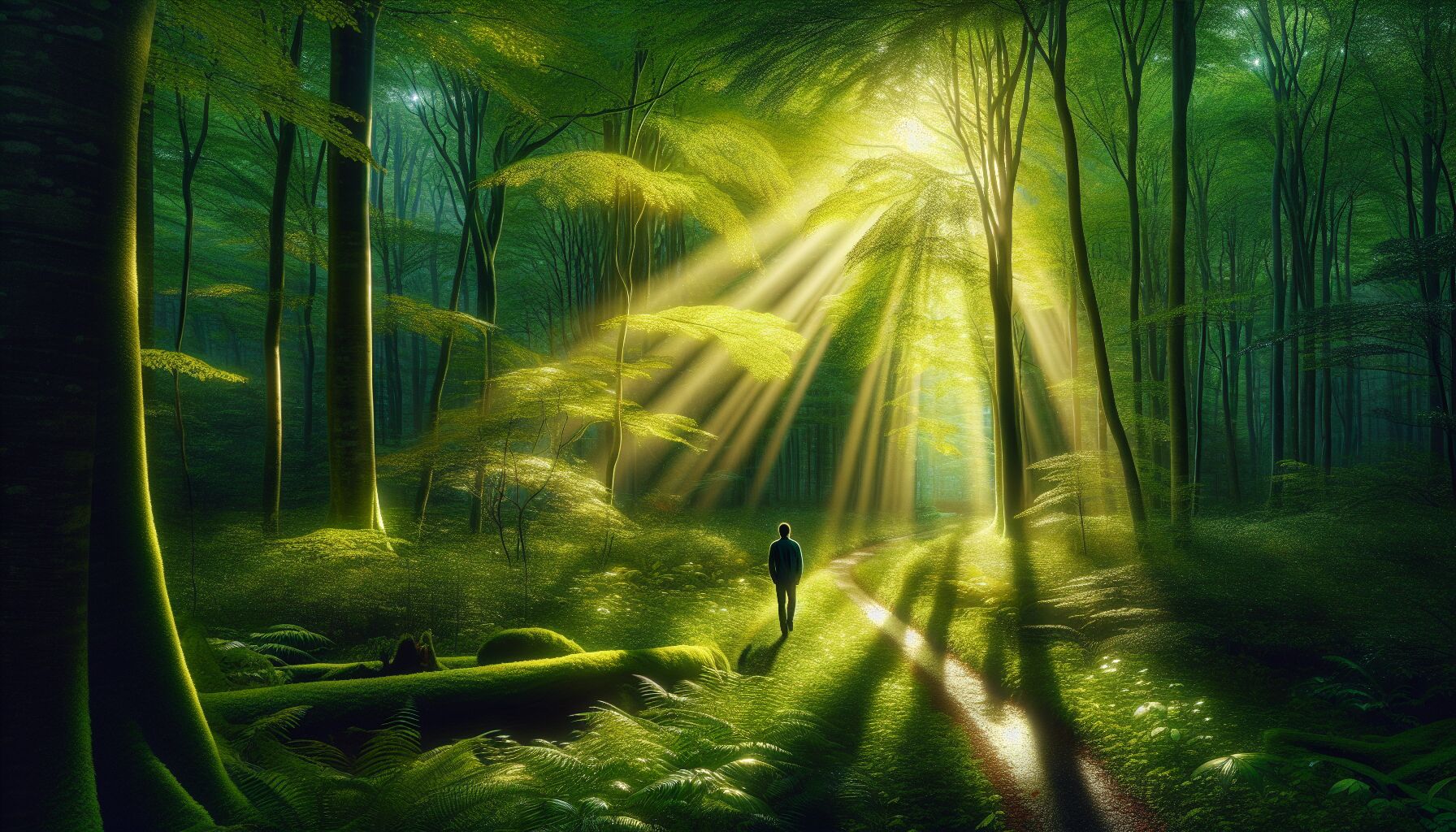 Imagine that feeling when you’re alone in a sunlit room, and everything feels just right. That’s the kind of personal spirituality we’re talking about—it’s the tuning into your own frequency and allowing yourself to be open to life itself. Finding personal spirituality isn’t about following a map someone else drew; it’s about crafting your path, feeling it underfoot as you walk.
Imagine that feeling when you’re alone in a sunlit room, and everything feels just right. That’s the kind of personal spirituality we’re talking about—it’s the tuning into your own frequency and allowing yourself to be open to life itself. Finding personal spirituality isn’t about following a map someone else drew; it’s about crafting your path, feeling it underfoot as you walk.
Now, let’s not ignore the elephant in the room. Talk about spirituality, and for many, ‘faith’ might come marching in with it, clad in robes and rituals. But here, faith isn’t something externally imposed; it’s the quiet intuition that whispers “you’re enough.” It’s about trusting in the universe, or maybe just the small part of it that you inhabit. Richard Rohr, that grounded soul of a man, once said something along the lines of “The full journey of life is about finding your way home to yourself.” It resonates, right?
But where do you start? Well, begin by paying attention. Often, it’s the simplest things that spark the most profound connections. While sitting by the ocean, noticing the rhythm of the waves, you might find a sense of deeper connection. Or in the forest, the wise whispers of the trees could speak to you in ways that no book ever could. In fact, nature has been considered a bridge for divine communication across cultures and time. You’re tuned into more than just a scenic view; you’re tapping into universal energy.
Here’s the thing: spirituality is as much about leaning into discomfort as it is about embracing peace. It’s about acknowledging those turbulent tides inside and still managing to sail onward. Engaging with challenging questions—those stubborn ones that don’t let go easily—builds resilience. Why do we feel alone in a crowded room? When the world whirls around you, how do you keep your inner calm intact? It’s these questions that often lead to growth.
Be playful with it. Write a letter to your future self. Or keep a journal—jot down dreams, hopes, and even those random thoughts that sneak in when you’re not looking. Over time, patterns emerge. There’s a magic in hindsight, in realizing how those seemingly disjointed pieces of your life fit together to form an intricate puzzle.
To find personal spirituality, cultivate moments of silence—it might surprise you just how cacophonous your mind can be when it’s quiet. But in that silence, a still, small voice often finds its way to the surface—a voice of your true self reaching out to be heard.
Later, imagine a tapestry woven with threads of faith, wisdom, and curiosity. Each thread represents connections, lessons, and those beautifully imperfect human experiences that shape our journey. That’s the canvas of personal spirituality. After all, spirituality is less about seeking outside and more about engaging deeply with what’s inside.
And remember, spirituality isn’t a destination. It’s a dynamic dance; sometimes you’ll lead, other times you’ll follow. It’s all part of the divine communication between you and something larger, something that defies words but beats deeply within.
Practicing gratitude and mindfulness
Imagine waking up each morning and instead of jumping into the whirlwind of life, you take a moment—just a pause—to feel grateful for the day unfurling ahead. Practicing gratitude doesn’t require grand gestures or elaborate rituals; it’s about those tiny acknowledgments—thanking the morning sun for showing up, the hot coffee for being just right, or the stranger who held the door open with a smile. Eckhart Tolle once mused that “Acknowledging the good that you already have in your life is the foundation for all abundance.” Let those words simmer and taste the truth in them.
So, let’s try this. Each day, list three things you’re thankful for. They don’t have to be monumental—something as mundane as a soft breeze through your window counts. Over time, this simple practice rewires your mind to recognize and savor life’s gifts, big and small. When gratitude becomes habitual, stress often melts like morning mist, leaving space for a quiet joy to settle in.
Suddenly, even the seemingly ordinary moments become extraordinary in their simplicity. You might find that life, even on its most challenging days, offers glimmers of grace. And you know what? This isn’t just wishful thinking; gratitude is a well-documented boon for mental health. Researchers at NCBI have found that grateful individuals often experience decreased stress and improved happiness—practical proof that this isn’t just feel-good fluff.
As you build this gratitude practice, pair it with mindfulness; the two go hand in hand like old friends. Mindfulness is about being in the moment—not clinging to the past or racing into the future. It’s like when you’re drinking tea and truly tasting it—the warmth of the cup in your hands, the aroma wafting through the air. Mindfulness invites you to be present, not just with your senses, but also with your experiences.
Why combine the two? Because together, they ground you. Imagine they’re like the roots of an ancient oak, steady and unyielding. Can you feel it? That strength in simplicity? When you’re grateful, it becomes easier to focus on the now, and when you’re mindful, your gratitude deepens because you’re fully aware of what’s unfolding.
Here’s a wildcard for you—creativity. Yes, tapping into your creative spirit enhances gratitude and mindfulness. Whether you paint, write, or doodle, creativity draws you into the present, where gratitude thrives like flowers in spring. Through expression, you might stumble upon insights, pieces of yourself eager to be discovered.
In practicing gratitude and mindfulness, you’re engaging in a divine communication—not just with a higher purpose but with the sacred moments of daily life. It’s a quiet revolution—a shift in perception that spirals outward, transforming how you interact with the world. By nurturing these practices, you cultivate a gentle faith in life’s unfolding, grounding spirituality not as an abstraction but as a lived, deeply personal reality.
Connecting through nature and creativity
 Imagine ambling through a lush forest, the sun playing hide and seek through the canopy above, with nothing but the sound of your footsteps and the rustle of leaves in the cool breeze. It’s in these moments of being fully present in nature where we often find connections to something greater. Some call it spirituality, others might just call it peace. Nature, with its boundless capacity for wonder, serves as a timeless medium for divine communication, offering quiet wisdom in the dance of light on water or the gentle sway of trees.
Imagine ambling through a lush forest, the sun playing hide and seek through the canopy above, with nothing but the sound of your footsteps and the rustle of leaves in the cool breeze. It’s in these moments of being fully present in nature where we often find connections to something greater. Some call it spirituality, others might just call it peace. Nature, with its boundless capacity for wonder, serves as a timeless medium for divine communication, offering quiet wisdom in the dance of light on water or the gentle sway of trees.
Have you ever noticed how the rhythm of nature syncs with your own heartbeat, guiding you into a state of calm and clarity? Perhaps this is what John Muir meant when he said, “In every walk with nature, one receives far more than he seeks.” Nature has a simplicity that our digitally cluttered lives sometimes lack, a simplicity that invites us to slow down and savor each moment, offering both a mirror and a window—into our souls and into the vast.
But let’s talk creativity—isn’t it just delightful how picking up a paintbrush or writing in a journal offers the same sense of communion? Creativity is a catalyst. It’s not about crafting a masterpiece; it’s about expression, about letting go and letting be. When you engage in creative activities, you engage in a silent dialogue between your spirit and your surroundings. And sometimes, the most meaningful conversations happen in the silence between brushstrokes or the pauses between words.
Think of nature and creativity as two sides of the same coin. Both invite you to be intentional and present—whether you’re attuning to the natural world’s whispers or expressing your unique spark on a blank canvas. Is there a better tool to explore faith than through creativity? It connects us with those parts of ourselves we often ignore, weaving threads of curiosity and intention in ways logic cannot.
Let’s not shy away from considering how everyday acts of creativity tether us to the divine. Maybe plant a seed, watch it grow, and see life’s miracles unfold ambitiously with sunlight and patience. Or let your mind wander along with the gentle flow of a stream, giving birth to thoughts untangled by constraints. It’s in these endeavors where you learn the art of seeing—the unseen patterns, the untouched possibilities, and the unexplored corners of your imagination.
Imagine for a second what it would be like if every moment was a creation, sprinkled with awe and gratitude. Could embracing simplicity as seen through a child’s eyes be the doorway to profound spirituality? Perhaps walking barefoot on cool grass or losing yourself in the strokes of a new painting are not just idle pastimes but paths leading to personal revelation.
These natural and creative interactions need not be grand; in truth, it’s their very ordinariness that makes them sacred. So, next time you find yourself amid nature’s splendor or caught up in the flow of creating, pause. Feel it. Listen. Let it speak. In that space, you might just catch a glimpse of something exquisite—a moment of genuine connection with something pure and unbounded by form.
 DS Haven In Light Of Things
DS Haven In Light Of Things






